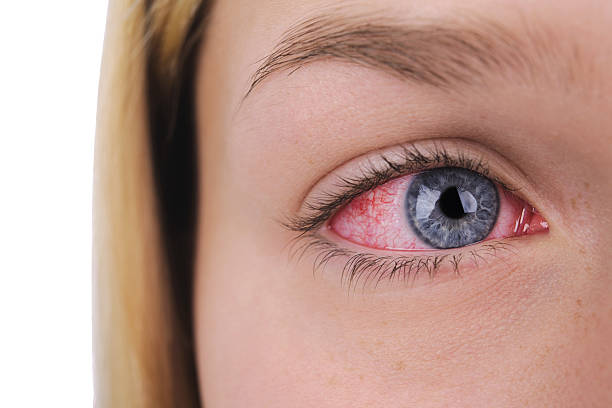Damage to the eyes
High blood pressure can damage the tiny, delicate blood vessels that supply blood to the eyes, causing: Damage to the blood vessels in the retina (retinopathy).
Red Eyes and Blood Pressure: What’s the Link?

Why the Red?
High blood pressure can sometimes make your eyes look red by causing something called a subconjunctival hemorrhage, says Zubair Ansari, MD, an ophthalmologist and assistant professor at the Bascom Palmer Eye Institute in Miami.
A subconjunctival hemorrhage is simply blood in the white part of the eye. That white part, called the conjunctiva, has small blood vessels that can break. Rupturing of weak blood vessels in the conjunctiva sometimes happens when you have high blood pressure, Dr. Ansari says. The bright red areas you see are caused by bleeding on the conjunctiva.
Dr. Ansari says that a subconjunctival hemorrhage is more likely to happen in people who have high blood pressure or who are using blood thinners. It does not cause permanent vision loss, and it will go away on its own, usually without treatment, he says.
You also might wake up with a subconjunctival hemorrhage due to straining or rubbing of your eye. It could even be caused by a strong sneeze or cough, according to the American Academy of Ophthalmology (AAO).
Subconjunctival hemorrhage, however, is by no means the only cause of red eyes. Usually, says Dr. Ansari, red eyes signify an irritation or inflammation of the conjunctiva. Possible causes include:
- Viral or bacterial conjunctivitis, a common and contagious eye infection, often called pink eye.
- Dry eye.
- Allergies.
- Environmental irritants.
- Corneal ulcers or abrasions.
- Uveitis, a painful inflammation that is not common but may occur in those with a history of autoimmune conditions. The eye redness would be accompanied by light sensitivity, Dr. Ansari says.
High Blood Pressure and Your Eyes
High blood pressure can have a negative effect on your eye health in ways other than subconjunctival hemorrhage. For instance, high blood pressure can lead to vision loss by affecting the blood vessels in the retina, the area in the back of the eye that gathers light, Dr. Ansari says.
Eye problems that can be caused by high blood pressure, according to the American Heart Association, include:
- Hypertensive retinopathy, which is damage to blood vessels that leads to blurred vision.
- Choroidopathy, which is a buildup of fluid under the retina that can affect your vision.
- Optic neuropathy, which is a blockage of blood flow that can lead to a loss of vision.
The key to avoiding these problems is to maintain a healthy blood pressure.
When to See a Doctor
You should see a doctor for red eyes if you have any related pain or loss of vision. The treatment your doctor gives will depend on the cause of the problem.
"It's important to think of red eyes not as a diagnosis but rather as a symptom of some other problem," Dr. Ansari says. Although subconjunctival hemorrhages are not usually serious, you should talk to your eye doctor if you get them a lot, the AAO recommends.
Most of the time, redness can be easily treated with over-the-counter drops like artificial tears, or antihistamine drops if the cause is allergies. One treatment that Dr. Ansari does not recommend is the use of common over-the-counter "red eye" treatment drops such as tetrahydrozoline ophthalmic, saying they may contain chemicals that can worsen dry or irritated eyes.
He says, though, that an over-the-counter medication called brimonidine tartrate can help get rid of redness in the eyes quickly and effectively. However, it's always recommended to discuss any drop use with your eye doctor before starting treatment, Dr. Ansari advises.






